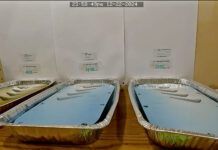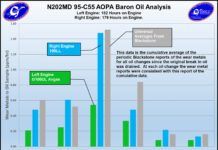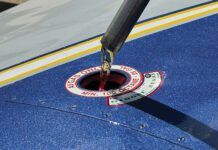Not 10 seconds after Wilbur cracked up the Flyer that cold December morning at Kitty Hawk, Orville must have asked, “whats this gonna cost me?” And weve been asking ever since, never more so than now as the future of 100LL hangs in the uncertain balance between readily available and extinction. As potential replacements loom hazily on the horizon-and frankly, there arent many of them-its fair to start asking what they might cost. Or to cynically turn the question on its head: Does anyone have the first clue?
No Ones Asking
At this stage, were aware of no industry wide economic analysis of what we view as the top three contenders, 94UL, Swifts 100SF and GAMIs G100UL. One reason for this is that the find-a-new-fuel effort has been biased toward the regulation and approval process at the expense of probing the refinery economics. Second, the two 100-octane options are works in progress, so making cost estimates is a smell test at best. Third, predicting future fuel prices of any kind is a black art governed by market forces with potentially wild variables.
Nonetheless, we think its worth asking so that owners can begin to form the kind of opinions that will eventually gel into genuine demand for one product or another. The overall outlook? At the moment, all three contenders seem within range of cost economics of current 100LL. But “in-range” is a slippery term.
94UL
Ignoring the argument over required octane for a moment, 94UL would seem to be the simplest solution. Its just 100LL without the lead; basically juiced up mogas, right? Unfortunately, no. As with all fuels, refineries make their 100LL octane numbers in various ways, depending on how theyre physically configured and what their economics are. Some refiners dose their avgas heavily with aromatic hydrocarbons-toluene, usually-while others use little or none. Lead concentrations vary, too. Typically, avgas blends are primarily made with alkylates-a branched hydrocarbon chain, isoparaffinic material, made by combining straight-chain light hydrocarbons with isobutane in the presence of liquid acidic catalysts. Alkylates are typically of high-octane and they represent the top-of-the-line components that refiners have available when making any kind of gasoline. But not all alkylation is created equal. Some refineries yield higher octane alkylates than others and/or what they produce is cheaper.
So knock the lead out of one avgas and you might be left with something close to 94UL, but take it out of another whose alkylation is of lower octane and you have something less. And therein lies the cost crunch.
A refiner with a lot of capacity for good quality alkylate might be able to blend avgas without the lead, adjust the aromatics and deliver a 94UL without sweating, while its competitor

either wont be able to match it or will chose not to because the margins not worth the effort.
If youre thinking just removing the lead alone will lower the price, youd hardly notice. Tetraethyl lead isn’t exactly gold; were told that only about a nickels worth-a couple of grams-goes into every gallon. Shells Rob Midgley told us that from Shells perspective and with current technology, a 94UL fuel would cost it a little more to produce than 100LL, because of additional processing for the base gasoline. For other refiners, it might cost the same or a little less.
What about transportation? Weve been told avgas is expensive to transport and store because its lead content (and low volume) prevents it from moving by pipeline and it requires dedicated truck, rail and barge transport. Wouldnt eliminating the lead make things simpler? Maybe, but simpler is not always cheaper. “To tell you the truth,” said one major avgas wholesaler we know, “well still use dedicated trucks because we don’t want to risk contaminating avgas with a lower octane product, whether it has lead in it or not.”
Bottom line: 94UL may be producible by many refineries, but some might take a pass on it for lack of suitable alkylation technology or because it doesnt fit their product mix. Fewer refineries means less price competition so the best guess is 94UL would cost about what 100LL does now, but could actually cost a little more. Transportation (and storage) doesnt appear to be a compelling factor.
Swift 100SF
Behind door two is Swift Enterprises 100SF, which the company now says will meet a $5 to $6 per gallon retail price. Thats between 30 cents and $1.30 higher than the current national average avgas price of about $4.70. Thats up quite a bit from Swifts initial estimates of around $2 (refinery cost, we presume) when it was first announced in 2007, but down from the $10 we were given as the latest estimate at Sun n Fun 2010.
What changed? We havent been able to pin down the details precisely, but we think Swifts initial numbers did not include all the capital recovery costs. The most highly visible change for Swift is that it now believes 100SF will be competitive if made from traditional hydrocarbon sources, namely the propylene thats a byproduct of refinery and chemical plant cracking processes, rather than from biomass. When Swift first appeared, it was described as being a renewable fuel made from cellulosic biomass such as switchgrass or sorghum. Those materials would be treated and fermented to make acetone which would then be dimerized and trimerized to make a binary blend of isopentane and mesitylene, the final fuel.
Swifts David Perme told us that more of Swifts work has concentrated on the downstream side of the acetone rather than the upstream, biomass side. Does this mean that Swift thinks its more economical to make 100SF from industrially sourced acetone than from biomass? Perme stopped short of saying that, but insists that having both a petrochemical and biomass option for the acetone feedstock gives Swift flexibility.
The capital requirements for Swift may be lower if it buys acetone on the open market rather than funding the machinery to build it from biomass. Perme says Swifts research reveals that the acetone conversion process itself can be done by many conventional refineries without major capital or infrastructure investments.
If this is true, the key will be the cost of acetone, about three gallons of which will be required to make a single gallon of mesitylene. Avgas currently comes out of the refinery at about $2.25 to $2.50 a gallon, add another buck and change and you get the current typical wholesale price of about $3.50. We find bulk acetone prices in just that range-about $3.40 or so, variable with market demand. To meet its $5 to $6 target and allow for the retail markup, Swifts major challenge will be finding acetone cheap enough to meet a refinery-out price between $3 and $3.50.
Ramping up to capacity will also be daunting for any of the new fuels. Depending on the source quoted, U.S. avgas demand is between 200 and 300 million gallons a year. Perme estimates it would take about a year to scale up to that volume, using primarily petroleum feedstock.
On the plus side, the FAAs initial testing of Swift Fuel reveals that it has excellent knock resistance characteristics and thus far, no component incompatibly issues have been discovered, despite its high aromatic content.
G100UL
The newest visible entrant in the fuels sweepstakes is G100UL, which emerged in a hurry late last year, the research product of General Aviation Modifications, Inc. in Ada, Oklahoma. The company hasnt revealed the G100UL formulation yet but says its made of conventional alkylate basestock with additional components that include some aromatics. The FAA hasnt run detonation tests on G100UL in its Atlantic City tech center, but weve seen GAMIs own test runs which seem to confirm that it performs about equally to 100-plus octane leaded avgas.
As GAMI has pushed its research forward, it now says that there are various ways to make the fuel to a minimum spec and the blends are definitely variable in price. GAMIs George Braly told us that the fuel can be made in conventional refineries with “materials found inside the fence of any refinery.” He notes that G100UL is a component blending approach, not an additive approach, meaning its performance lies in getting the component ratios exactly right. Unlike other fuels research, because it has a test cell, GAMIs work has been based on full-scale engine testing, not motor octane tests.
In an interview in July, Braly told us he currently estimates that G100UL could be produced by refineries at price within 50 cents, plus or minus, of current avgas prices, so we take that to be between $4 and $5. How confident are we of this price? Not very, because we cant yet run the blend components past independent sources. We expect to be able to do that before the end of the year.
As far as scaling up to make G100UL for refineries that have the basic alkylation capacity, Braly says the additional components could be shipped in from other sources and simply blended or refined on site by the refinery. Its production doesnt seem as complex as Swifts catalytically converted acetone. But yields for both processes are unknown.
Cessna CEO Jack Pelton visited GAMIs Ada test cell in July and after a demo said, “G100LL looks to be a fuel that can be refined and distributed within the existing infrastructure we have here in the states. I would guess it could be produced in many other international locations also.”
Conclusion
At best, price estimates on the two 100-octane contenders are informed stabs in the dark. At this point, we don’t see anything so wildly out of whack economically that would suggest they arent worth pursuing further. Its simply too soon to put sharp price numbers on these products.
In a way, 94UL, once thought to be the easy go-to backup fuel, is the outlier. It would cost at least as much as 100LL and maybe a little more while delivering less octane. Although Continental favors this fuel, it concedes that adopting it will require engine modifications for some owners and/or operating restrictions. No one knows how the market will take to this.
Lycoming, on the other hand, believes the market wont support engine mods and will have little tolerance for performance restrictions and the recertifications these may require. Clarity awaits.




